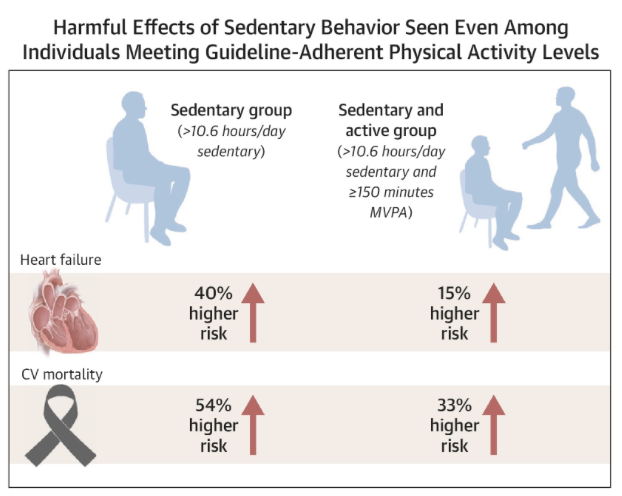Sitting too long can affect heart health even if you exercise, scientists warn
New study adds to growing evidence of strong link between sedentary behaviour and heart health
Your support helps us to tell the story
From reproductive rights to climate change to Big Tech, The Independent is on the ground when the story is developing. Whether it's investigating the financials of Elon Musk's pro-Trump PAC or producing our latest documentary, 'The A Word', which shines a light on the American women fighting for reproductive rights, we know how important it is to parse out the facts from the messaging.
At such a critical moment in US history, we need reporters on the ground. Your donation allows us to keep sending journalists to speak to both sides of the story.
The Independent is trusted by Americans across the entire political spectrum. And unlike many other quality news outlets, we choose not to lock Americans out of our reporting and analysis with paywalls. We believe quality journalism should be available to everyone, paid for by those who can afford it.
Your support makes all the difference.Ten hours or more of sedentary behaviour per day may increase heart failure risk even in those who regularly exercise, a new study warns.
Insufficient exercise is a known contributor to heart disease and health guidelines recommend nearly 150 minutes of moderate-to-vigorous physical activity per week to cut this risk.
However, exercise accounts for only a fraction of overall daily activity and the current guidelines do not provide specific advice on sedentary behaviour, according to scientists from the Massachusetts General Hospital in the US.
The new study, published in the journal JACC, assessed health information from nearly 90,000 people recorded in the UK biobank.
Participants submitted their data recorded by a wrist-worn accelerometer which captured their movements over seven days. The average age of the participants was 62 years and about 56 per cent were women with a mean sedentary time per day of about 9.4 hours.
The study assessed the amount of sedentary time at which heart disease risk appeared greatest.

Scientists assessed how sedentary time and physical activity together impacted the risk of deadly conditions like atrial fibrillation (AF), myocardial infarction (MI), and heart failure (HF).
After following the participants for eight years, scientists found that about 3,600 individuals developed AF and over 1,850 got HF, while more than 1,600 had MI.
Nearly 900 of these participants died of heart diseases, scientists say.
Researchers also observed that the effects of sedentary time on the participants varied by outcome.
For instance, among those who experienced AF and MI, the risk seemed to increase steadily over time without any major shifts.
Among those with HF and heart disease, the increase in risk was minimal until sedentary time exceeded about 10.5 hours a day.
At this point, the study found that the risk rose significantly, showing a “threshold” effect for the behaviour.
Some effects of sedentary behaviour on AF and MI risks were substantially reduced in participants meeting the recommended 150 minutes of moderate-to-vigorous physical activity or more.
However, in these participants, the effects on “higher risk” of HF and CV mortality “remained prominent,” researchers warn.

“Future guidelines and public health efforts should stress the importance of cutting down on sedentary time,” study co-author Shaan Khurshid said.
“Avoiding more than 10.6 hours per day may be a realistic minimal target for better heart health.”
Highlighting a limitation of the study, scientists say the wrist-worn accelerometers from which participant data was collected are imperfect at detecting posture and may misclassify sedentary time.
However, the study still adds to the growing evidence of a strong link between sedentary behaviour and heart health, they say.
“The findings strongly suggest that we need to get people moving to promote better health,” Charles Eaton, director of the Brown University Department of Family Medicine, said in a linked editorial in the journal.

Join our commenting forum
Join thought-provoking conversations, follow other Independent readers and see their replies
Comments